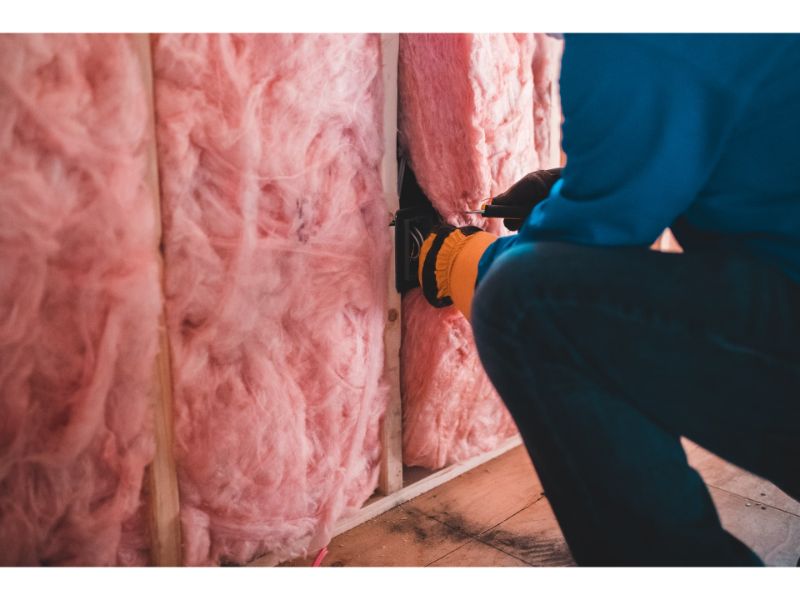Five Different Types of Insulation for Your Garage

Even if you are a full-fledged winter fanatic who can't wait to hit the slopes and who thinks breaking out the snowblower is fun, one thing you do not like about winter is the heating bill. Most homeowners put in long hours trying to find ways to reduce their heating bill but many still overlook a significant source of heat loss: the garage.
In many cases the garage is like a walk-in refrigerator attached to the house, sucking warm air out of adjoining rooms. Garage walls are often uninsulated, and that goes for the garage door as well, (which is essentially an exterior wall). The colder the garage, the more heat it pulls from adjoining rooms. The more heat it sucks out of those adjoining rooms, the bigger your heating bill (read our earlier content to learn additional ways that uninsulated and older garage doors waste money).
If your garage as a whole (or your garage door in particular) is not insulated, you are venting heat into space for no reason. Help get your heating bill under control with one of these five types of garage insulation.
Fiberglass Insulation
Fiberglass insulation is by far the most popular type used in homes throughout North America. It’s available in rolls designed to fit between wall studs as well as floor and ceiling joists. It can also be purchased as loose-fill insulation. Fiberglass insulation is affordable and readily available through countless retailers. For garage doors, rolled fiberglass is easy to cut into panel-sized portions that can be nestled up against the panels and then held in place with duct tape. Kits are also available that provide pre-cut panel-size pieces of insulation as well as the tape to hold them in place. Just make sure you wear a mask, gloves and a long sleeve shirt when working with fiberglass.
Rigid Foam Insulation
This type of insulation comes in large 4'x8' sheets that you will need to cut to fit in between studs and joists or onto the back of your garage door panels. These rigid sheets vary in thickness from ½ to 4 inches and typically provide an outstanding R-value. Rigid foam insulation is very easy to work with and can be attached to a garage door panel using construction adhesive. There is just such an adhesive designed for foam insulation, and it too is affordable. On garage door panels, rigid foam often provides a cleaner look than fiberglass, which can often have a puffy, unfinished appearance.
Cellulose Insulation
With cellulose insulation, a series of holes are cut into the walls, floor and ceiling, and the loose cellulose insulation is blown into the cavities between the studs and joists. A lot of people prefer this type of insulation because it is often made from recycled material. It is not, however, the easiest material to work with as it requires a special blower to push the material into the walls and floor. Also, it’s of no use for garage doors or for the unfinished walls found in many garages. In addition, the cellulose tends to settle over time.
Spray Foam Insulation
Spray foam insulation has a lot going for it. It provides a very high R-value (typically R20+), creates an effective vapor barrier and also helps to buttress the structural integrity of the walls it is sprayed on. However, while very effective, spray foam insulation is more expensive than rolls of fiberglass insulation, and for that reason, you won't often see homeowners adding spray foam insulation to their garage. That is, unless they intend to transform the garage into a living space. This type of insulation is more expensive because it needs to be installed by professional garage technicians with the right equipment and what amounts to a hazmat suit to protect them while applying the product.
Radiant Barrier Reflective Foil
This is really insulation at its simplest. The reflective foil insulation comes in rolls and resembles aluminum foil that you wrap food in, except it’s thicker. This type of insulation is not designed so much to trap heat as it is to reflect heat. If you install this on the inside of your garage walls it will help keep whatever heat there is in the garage from escaping into the atmosphere. Like spray foam and cellulose insulation, rolls of radiant barrier reflective foil won’t be much help for the garage door, but you can handle that separately using fiberglass batts or rigid foam.
The Bottom Line
So there you have it - five different types of insulation that will help stop your garage from sucking heat out of your home during the winter. Each one has its strengths and weaknesses and you may well wind up using a couple of different types. For instance, cellulose in the walls, ceiling and floor, and rigid foam on the garage door.
Speaking of the garage door, we cannot emphasize strongly enough how important it is to include the garage door in your plan to insulate the garage. If you wind up insulating the walls, ceiling and floor but not the door your efforts to retain heat will be fatally flawed from the get-go. We hope you found this information useful, and don’t forget to contact A Better Garage Door for all your garage door needs.